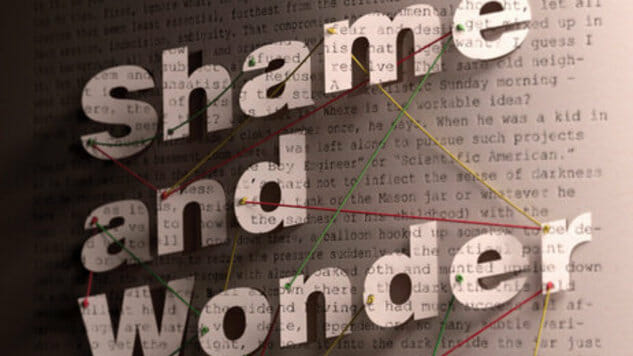Introducing Endless Mode: A New Games & Anime Site from Paste
From the opening pages of Shame and Wonder, it’s clear that David Searcy is a curious man. He transports readers down the rabbit hole of his own mind, recalling childhood memories and the heartbreaking moments of adulthood. And though he delivers a collection of essays laced with wisdom and beauty, Searcy forges a double-edged sword with his genuine interest in the world around him. If not fully engaged, the reader can easily get lost in the labyrinth of his many insights.
 There’s more wonder to discover in this collection than shame. Searcy’s voice is gentle, almost verging on monotony at times. He doesn’t appear to grow frazzled by anything, instead greeting every development with a slightly raised eyebrow and a knowing sense that this, too, shall pass. It’s easier to imagine him telling stories while sitting on the patio than holding court in a more formal setting. The effect is charming and succeeds in creating a sense of intimacy, as if you’re leaning forward to better hear him as the sun goes down and the crickets begin chirping.
There’s more wonder to discover in this collection than shame. Searcy’s voice is gentle, almost verging on monotony at times. He doesn’t appear to grow frazzled by anything, instead greeting every development with a slightly raised eyebrow and a knowing sense that this, too, shall pass. It’s easier to imagine him telling stories while sitting on the patio than holding court in a more formal setting. The effect is charming and succeeds in creating a sense of intimacy, as if you’re leaning forward to better hear him as the sun goes down and the crickets begin chirping.
Searcy isn’t afraid to turn the microscope on his own life, and many of these close observations are moving. “Didelphis Nuncius,” for example, eloquently captures the journey back to normalcy after divorce. But other stories fail to strike the balance between universality and personal experience; in “The Hudson River School,” Searcy devotes pages to his decision not to call the father of his dental hygienist to discuss a coyote that once preyed on the father’s sheep.
Issues with pacing also plague the essays, as Searcy’s writing is full of asides and notes to himself. A piece will quickly veer from reading like a dreamy, post-dinner conversation to an anecdote related by a friend who won’t let the details go for the sake of the story. The sense of intimacy that once captivated the reader suddenly feels like an obligation to continue to the end, despite a tested attention span.
The best essays in the collection are short, just allowing Searcy to connect the many dots with bemusement. “Sexy Girls Near Dallas” presents a touching meditation on pop up ads and desire, while “Mad Science” weaves a portrait of all-American boyhood that’s at once sentimental and light. “Science Fictions,” told in three parts, allows Searcy to meander while still concluding his thoughts in each section. Deeply grounded in the everyday yet appearing to float above it, Searcy’s writing ultimately pulls together pieces that might not otherwise seem connected.
Shame and Wonder is not a book to quickly devour. Its slow pace and deeply meditative nature make for involved reading, not unlike David Foster Wallace’s essays in the level of effort needed to keep up with the author. But the collection is ultimately unpretentious and genuine, leaving questions unanswered for the reader to contemplate. The greatest takeaway may be that, along with being immensely intelligent and observant, Searcy is remarkably likable. His one fault is that his style verges on alienating when he allows himself too much space to roam.

 There’s more wonder to discover in this collection than shame. Searcy’s voice is gentle, almost verging on monotony at times. He doesn’t appear to grow frazzled by anything, instead greeting every development with a slightly raised eyebrow and a knowing sense that this, too, shall pass. It’s easier to imagine him telling stories while sitting on the patio than holding court in a more formal setting. The effect is charming and succeeds in creating a sense of intimacy, as if you’re leaning forward to better hear him as the sun goes down and the crickets begin chirping.
There’s more wonder to discover in this collection than shame. Searcy’s voice is gentle, almost verging on monotony at times. He doesn’t appear to grow frazzled by anything, instead greeting every development with a slightly raised eyebrow and a knowing sense that this, too, shall pass. It’s easier to imagine him telling stories while sitting on the patio than holding court in a more formal setting. The effect is charming and succeeds in creating a sense of intimacy, as if you’re leaning forward to better hear him as the sun goes down and the crickets begin chirping.